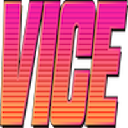-
 Bitcoin
Bitcoin $83,761.5162
-0.79% -
 Ethereum
Ethereum $1,560.7768
-3.36% -
 Tether USDt
Tether USDt $0.9999
0.00% -
 XRP
XRP $2.0759
-1.95% -
 BNB
BNB $581.4168
-0.36% -
 Solana
Solana $127.0879
-0.76% -
 USDC
USDC $0.9999
-0.01% -
 TRON
TRON $0.2514
0.39% -
 Dogecoin
Dogecoin $0.1530
-1.63% -
 Cardano
Cardano $0.6047
-2.55% -
 UNUS SED LEO
UNUS SED LEO $9.4090
0.50% -
 Chainlink
Chainlink $12.1339
-1.88% -
 Avalanche
Avalanche $18.7533
-3.95% -
 Stellar
Stellar $0.2341
-1.77% -
 Toncoin
Toncoin $2.8633
-2.76% -
 Shiba Inu
Shiba Inu $0.0...01164
-1.57% -
 Sui
Sui $2.0688
-2.49% -
 Hedera
Hedera $0.1558
-2.40% -
 Bitcoin Cash
Bitcoin Cash $317.7189
-2.09% -
 Litecoin
Litecoin $74.4413
-1.09% -
 Polkadot
Polkadot $3.5267
-1.73% -
 Dai
Dai $1.0001
0.01% -
 Hyperliquid
Hyperliquid $15.5553
1.26% -
 Bitget Token
Bitget Token $4.3098
0.23% -
 Ethena USDe
Ethena USDe $0.9993
0.02% -
 Pi
Pi $0.5992
-10.38% -
 Monero
Monero $216.3755
0.29% -
 Uniswap
Uniswap $5.0904
-3.03% -
 OKB
OKB $51.4466
0.63% -
 Pepe
Pepe $0.0...07118
1.06%
What is the Move language and its design goals?
Move, designed for blockchain smart contracts, emphasizes safety, flexibility, and efficiency, and is used by Aptos and Sui to enhance secure transaction execution.
Apr 07, 2025 at 10:07 pm
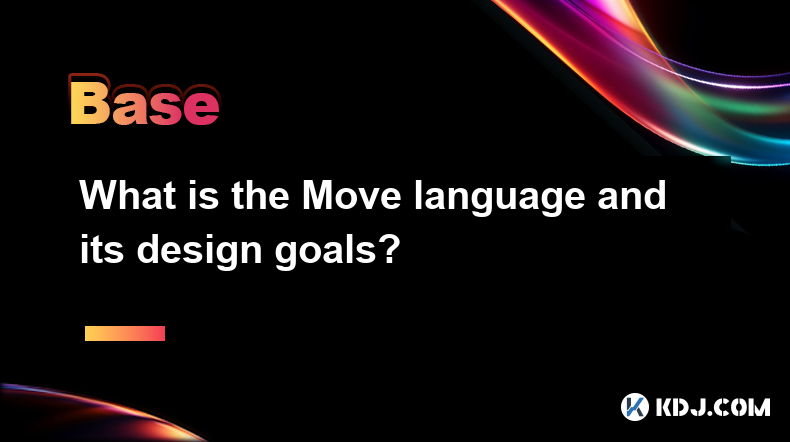
The Move language is a programming language specifically designed for the development of smart contracts on blockchain platforms. It was initially developed by the team at Libra, a project that aimed to create a global digital currency, and has since been adopted by other blockchain projects, including Aptos and Sui. The primary design goals of Move are to ensure safety, flexibility, and efficiency in the execution of smart contracts. In this article, we will delve into the details of the Move language and explore its design goals in depth.
Origin and Purpose of Move
The Move language was created to address the unique challenges faced by blockchain systems, particularly in the realm of smart contract execution. Move was designed to prevent common vulnerabilities found in other smart contract languages, such as reentrancy attacks and integer overflows. By focusing on safety and security, the developers of Move aimed to create a language that could be trusted to execute complex financial transactions without the risk of errors or exploits.
Key Features of Move
Move incorporates several key features that set it apart from other programming languages used in blockchain development. One of the most notable features is resource-oriented programming. In Move, resources are unique types that represent digital assets and can only be moved between accounts, not copied or discarded. This approach helps prevent accidental loss or duplication of assets, enhancing the security of transactions.
Another important feature of Move is linear logic. This concept ensures that resources are used exactly once, which helps prevent common programming errors such as double-spending. Linear logic also aids in the verification of smart contracts, making it easier to prove that a contract behaves as intended.
Move also supports modular programming, allowing developers to break down complex contracts into smaller, more manageable modules. This modularity not only makes it easier to develop and maintain smart contracts but also enhances their reusability and composability.
Design Goals of Move
The design goals of Move are centered around three main principles: safety, flexibility, and efficiency. Let's explore each of these goals in detail.
Safety
Safety is the foremost design goal of Move. The language is designed to prevent common programming errors and vulnerabilities that can lead to security breaches. Move achieves this through its resource-oriented programming model and linear logic, which ensure that digital assets are handled correctly and securely. Additionally, Move includes a formal verification system that allows developers to mathematically prove the correctness of their smart contracts, further enhancing safety.
Flexibility
Flexibility is another key design goal of Move. The language is designed to be adaptable to a wide range of use cases, from simple token transfers to complex financial instruments. Move's modular programming model allows developers to build and compose smart contracts in a flexible manner, enabling them to create custom solutions tailored to their specific needs. This flexibility is crucial for the development of innovative blockchain applications.
Efficiency
Efficiency is the third design goal of Move. The language is designed to execute smart contracts quickly and with minimal resource consumption. Move's bytecode is optimized for performance, allowing for fast execution of transactions on the blockchain. Additionally, Move's resource-oriented programming model helps reduce the computational overhead associated with managing digital assets, further enhancing efficiency.
Practical Applications of Move
Move has been adopted by several blockchain projects, each leveraging its unique features to build secure and efficient smart contract platforms. Aptos and Sui are two notable examples of blockchain platforms that use Move. Aptos, for instance, uses Move to create a scalable and secure blockchain that can support a wide range of decentralized applications. Sui, on the other hand, utilizes Move to build a high-performance blockchain that can handle complex financial transactions with ease.
Learning and Using Move
For developers interested in learning and using Move, there are several resources available. The official Move documentation provides a comprehensive guide to the language, including tutorials, examples, and reference materials. Additionally, online courses and workshops are available to help developers get started with Move and build their first smart contracts.
- Visit the official Move documentation website
- Explore the Move tutorials and examples
- Join online communities and forums dedicated to Move development
- Participate in workshops and courses to gain hands-on experience
Challenges and Considerations
While Move offers many advantages, there are also challenges and considerations that developers should be aware of. One challenge is the learning curve associated with Move's unique programming model. Developers accustomed to traditional programming languages may need time to adapt to Move's resource-oriented approach and linear logic. Additionally, the formal verification system, while enhancing safety, can be complex to implement and may require specialized knowledge.
Another consideration is the ecosystem surrounding Move. While Move is gaining traction, it is still a relatively new language compared to established smart contract languages like Solidity. Developers should consider the availability of tools, libraries, and community support when deciding whether to use Move for their projects.
Frequently Asked Questions
Q: Can Move be used for developing decentralized finance (DeFi) applications?
A: Yes, Move is well-suited for developing DeFi applications due to its focus on safety and efficiency. Its resource-oriented programming model and linear logic help prevent common vulnerabilities, making it an ideal choice for handling complex financial transactions.
Q: How does Move compare to other smart contract languages like Solidity?
A: Move differs from Solidity in several key ways. Move's resource-oriented programming model and linear logic provide enhanced safety and security compared to Solidity. Additionally, Move's modular programming approach offers greater flexibility in building and composing smart contracts. However, Solidity has a more established ecosystem and a larger community of developers.
Q: Is formal verification mandatory when using Move?
A: Formal verification is not mandatory when using Move, but it is highly recommended. The formal verification system in Move allows developers to mathematically prove the correctness of their smart contracts, enhancing their safety and reliability. While it may require additional effort, the benefits of formal verification make it a valuable tool for Move developers.
Q: Are there any tools available for debugging Move smart contracts?
A: Yes, there are several tools available for debugging Move smart contracts. The Move Prover is a formal verification tool that can help identify and fix errors in smart contracts. Additionally, the Move Playground provides an interactive environment for testing and debugging Move code. Developers can also use traditional debugging tools and techniques to troubleshoot their Move smart contracts.
Disclaimer:info@kdj.com
The information provided is not trading advice. kdj.com does not assume any responsibility for any investments made based on the information provided in this article. Cryptocurrencies are highly volatile and it is highly recommended that you invest with caution after thorough research!
If you believe that the content used on this website infringes your copyright, please contact us immediately (info@kdj.com) and we will delete it promptly.
- Russia Might Enter the Stablecoin Market After Wallets Connected to Russian Users and Holding USDT Were Frozen Last Month
- 2025-04-17 03:35:19
- XRP continues to act as an interest of traders with its price trapped in a falling wedge formation.
- 2025-04-17 03:35:19
- Ethereum Whales Dump $1.8B in ETH as Price Stalls
- 2025-04-17 03:30:15
- Dexsport, BetDEX, Bitsler, Coins.Game, and Chips.gg Are Revolutionizing the Online Gambling Landscape
- 2025-04-17 03:30:15
- title: Welcome to The Protocol, CoinDesk's weekly wrap-up of the most important stories in cryptocurrency tech development.
- 2025-04-17 03:30:13
- Bitcoin (BTC) Rally Stalled by Jerome Powell's Warning on Trump Tariffs
- 2025-04-17 03:30:13
Related knowledge

What does Floor Price mean in the NFT market
Apr 17,2025 at 12:42am
The term Floor Price is a critical concept within the NFT (Non-Fungible Token) market, serving as a key indicator for both buyers and sellers. In essence, the floor price represents the lowest price at which an NFT from a particular collection is currently listed for sale on a marketplace. This price point is crucial for understanding the perceived valu...

What is Alpha? How to find Alpha opportunities?
Apr 16,2025 at 12:42pm
What is Alpha?Alpha is a term widely used in the financial world, including the cryptocurrency market, to describe the ability of an investment to outperform a benchmark. In the context of cryptocurrencies, alpha refers to the excess return an investor achieves over the market's average return. For example, if the overall crypto market grows by 10% in a...
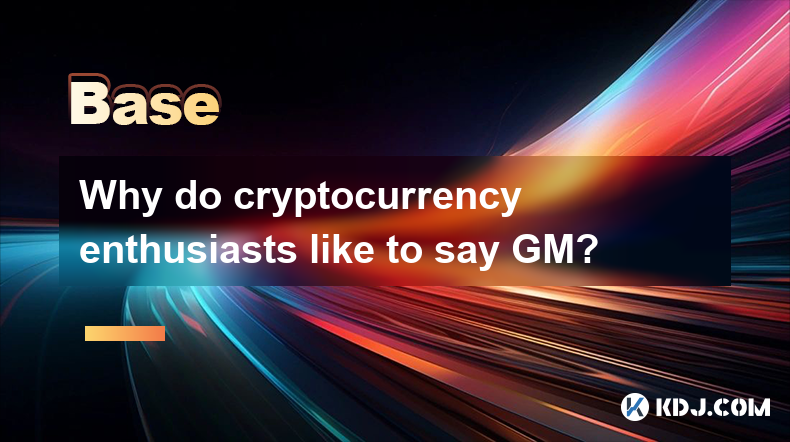
Why do cryptocurrency enthusiasts like to say GM?
Apr 16,2025 at 06:21am
In the world of cryptocurrency, the term 'GM' has become a popular greeting among enthusiasts. GM stands for 'Good Morning,' and its widespread use within the crypto community has a deeper significance than just a simple greeting. This article delves into the reasons why cryptocurrency enthusiasts like to say GM, exploring its origins, cultural signific...

What do WAGMI and NGMI mean?
Apr 16,2025 at 08:08pm
In the world of cryptocurrency, you might often come across the acronyms WAGMI and NGMI. These terms have become part of the crypto slang and are frequently used in discussions, tweets, and forums related to digital currencies. Let's delve into what these terms mean, their origins, and how they are used within the crypto community. Understanding WAGMIWA...
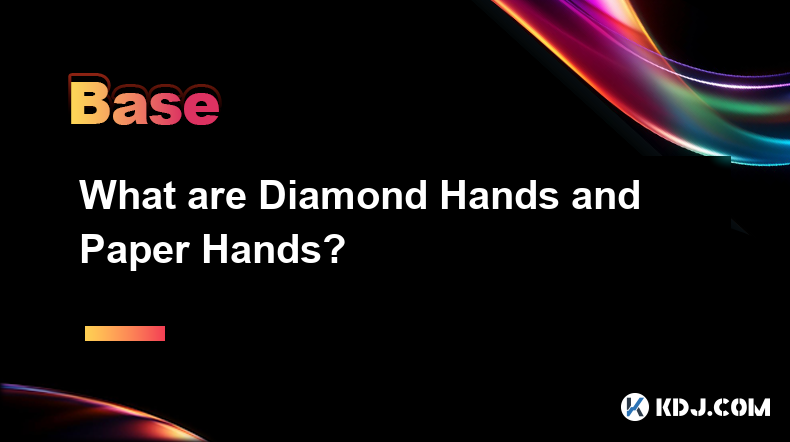
What are Diamond Hands and Paper Hands?
Apr 16,2025 at 10:42am
In the world of cryptocurrencies, the terms Diamond Hands and Paper Hands are frequently used to describe the behavior and mindset of investors, particularly in volatile markets. These terms originated from online communities and have become a significant part of the crypto lexicon, often used to describe the level of resilience and commitment an invest...
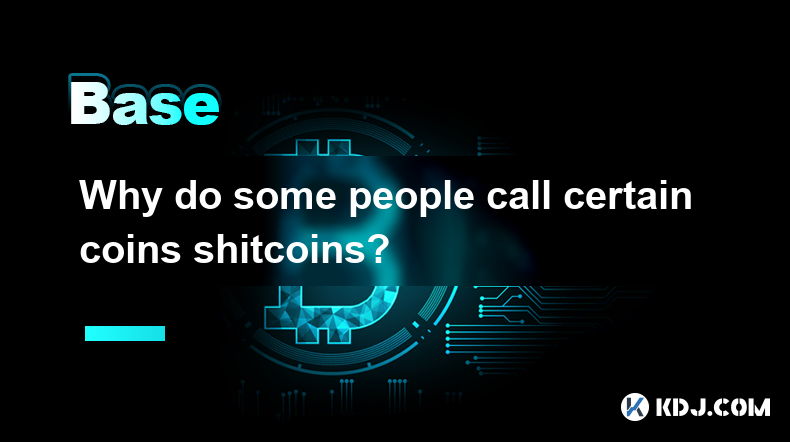
Why do some people call certain coins shitcoins?
Apr 17,2025 at 03:21am
Understanding the Term 'Shitcoin'The term 'shitcoin' is a colloquialism within the cryptocurrency community that is used to describe cryptocurrencies that are perceived as having little to no value or potential. It is a derogatory term, often used to express disdain or skepticism about the viability of certain digital assets. The use of 'shitcoin' is su...

What does Floor Price mean in the NFT market
Apr 17,2025 at 12:42am
The term Floor Price is a critical concept within the NFT (Non-Fungible Token) market, serving as a key indicator for both buyers and sellers. In essence, the floor price represents the lowest price at which an NFT from a particular collection is currently listed for sale on a marketplace. This price point is crucial for understanding the perceived valu...

What is Alpha? How to find Alpha opportunities?
Apr 16,2025 at 12:42pm
What is Alpha?Alpha is a term widely used in the financial world, including the cryptocurrency market, to describe the ability of an investment to outperform a benchmark. In the context of cryptocurrencies, alpha refers to the excess return an investor achieves over the market's average return. For example, if the overall crypto market grows by 10% in a...

Why do cryptocurrency enthusiasts like to say GM?
Apr 16,2025 at 06:21am
In the world of cryptocurrency, the term 'GM' has become a popular greeting among enthusiasts. GM stands for 'Good Morning,' and its widespread use within the crypto community has a deeper significance than just a simple greeting. This article delves into the reasons why cryptocurrency enthusiasts like to say GM, exploring its origins, cultural signific...

What do WAGMI and NGMI mean?
Apr 16,2025 at 08:08pm
In the world of cryptocurrency, you might often come across the acronyms WAGMI and NGMI. These terms have become part of the crypto slang and are frequently used in discussions, tweets, and forums related to digital currencies. Let's delve into what these terms mean, their origins, and how they are used within the crypto community. Understanding WAGMIWA...

What are Diamond Hands and Paper Hands?
Apr 16,2025 at 10:42am
In the world of cryptocurrencies, the terms Diamond Hands and Paper Hands are frequently used to describe the behavior and mindset of investors, particularly in volatile markets. These terms originated from online communities and have become a significant part of the crypto lexicon, often used to describe the level of resilience and commitment an invest...

Why do some people call certain coins shitcoins?
Apr 17,2025 at 03:21am
Understanding the Term 'Shitcoin'The term 'shitcoin' is a colloquialism within the cryptocurrency community that is used to describe cryptocurrencies that are perceived as having little to no value or potential. It is a derogatory term, often used to express disdain or skepticism about the viability of certain digital assets. The use of 'shitcoin' is su...
See all articles




















































































